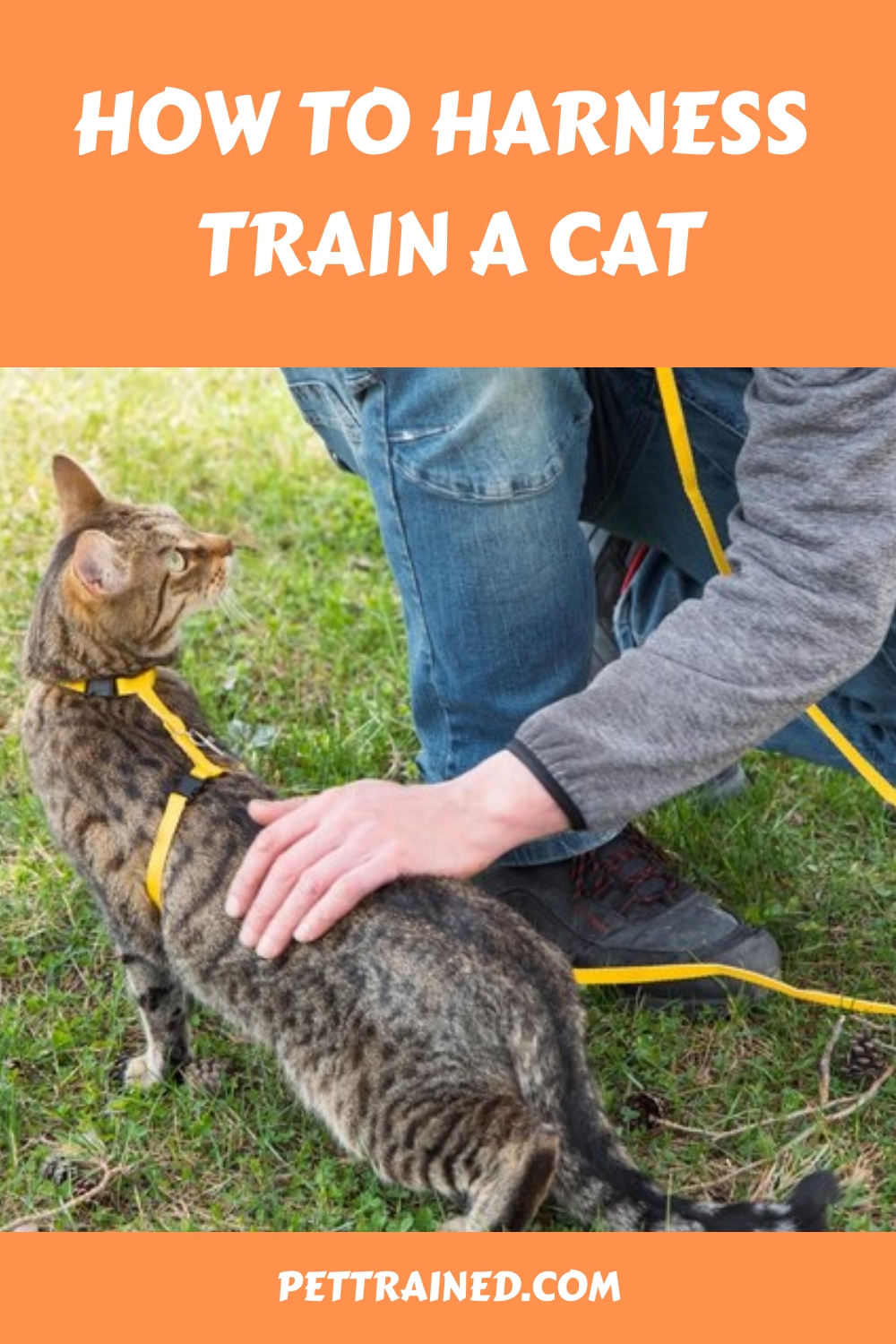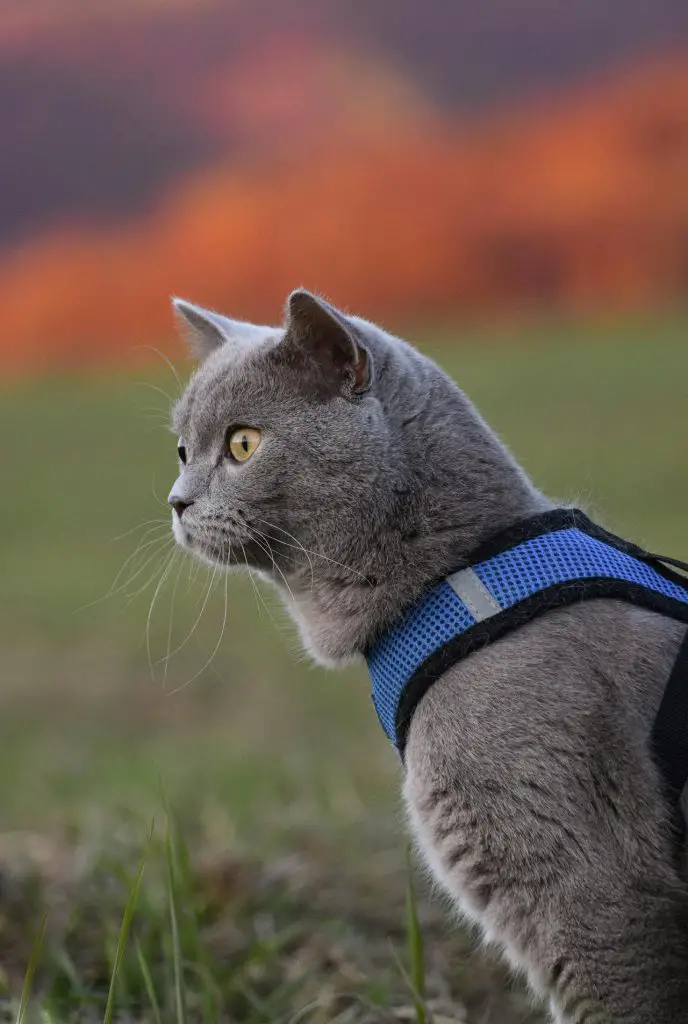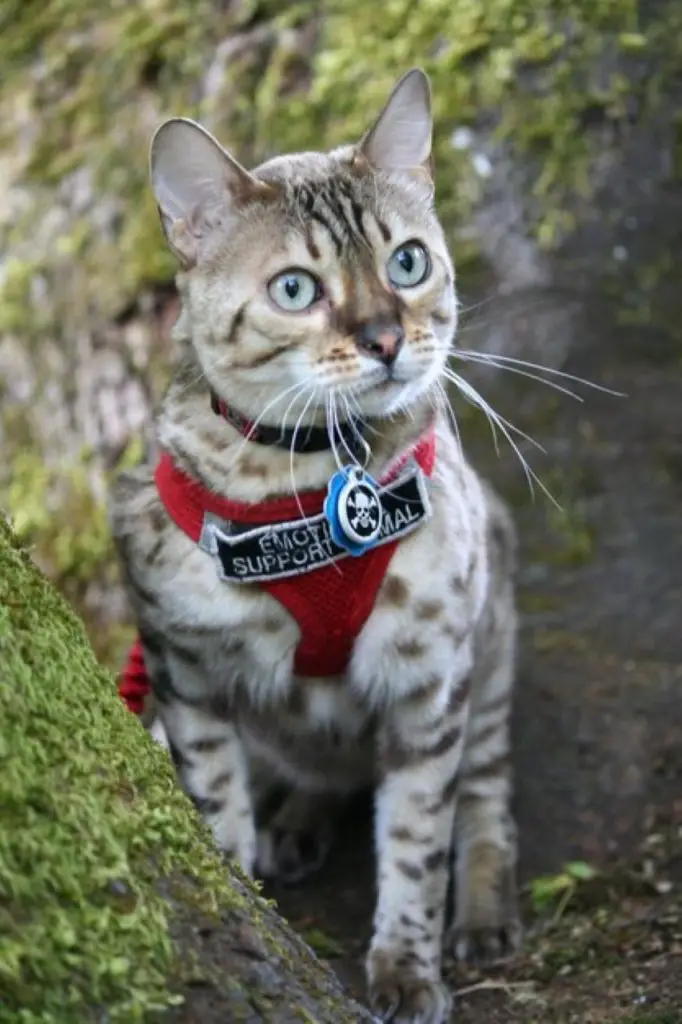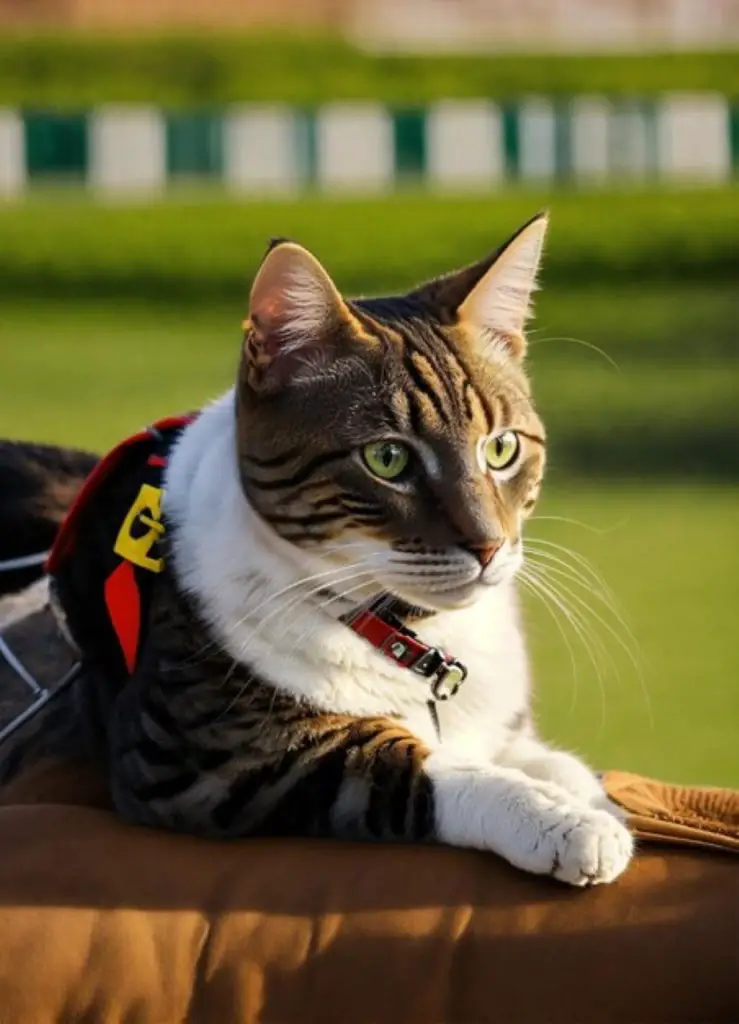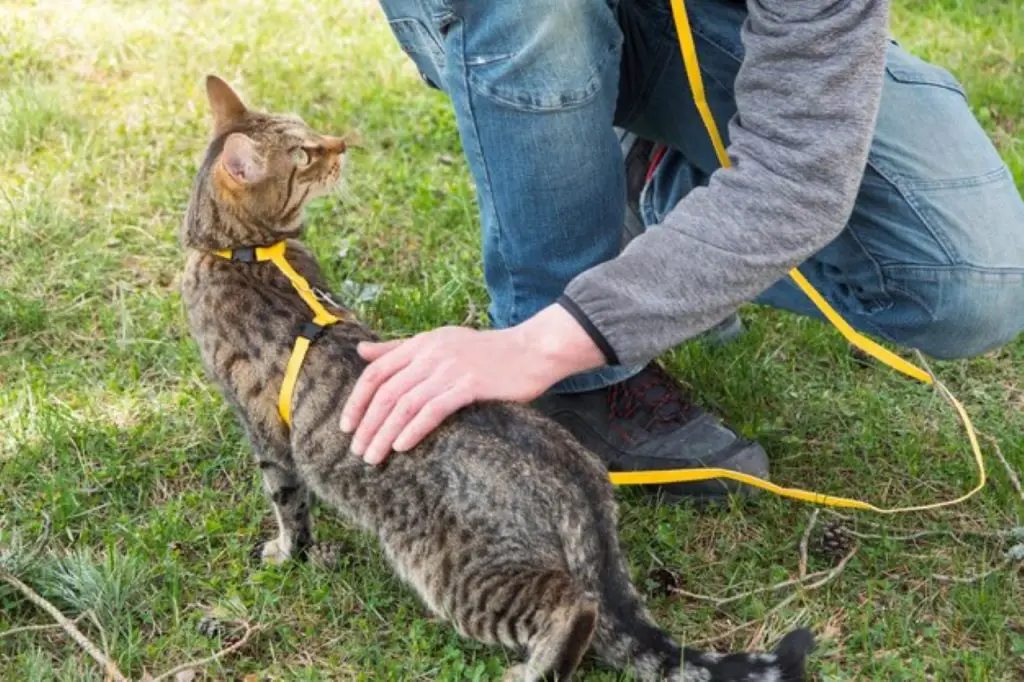
To harness train a cat, you’ll first need to choose a well-fitting harness that distributes pressure evenly, with a vest-style harness recommended for a snug fit. Introduce the harness gradually, allowing your cat to see and sniff it at its own pace. Start with short, indoor training sessions, using treats and praise to reinforce positive behavior. Once your cat is comfortable wearing the harness, you can add a leash and begin indoor walking sessions. As your cat becomes more confident, you can progress to outdoor walks. Next, you’ll want to learn how to tailor your training approach to your cat’s unique needs and personality.
Table of Contents
Key Takeaways
- Choose a well-fitting, cat-specific harness with a snug fit and force distribution, allowing two fingers to fit comfortably under the straps.
- Introduce the harness gradually, allowing the cat to see and sniff it at its own pace, to reduce overwhelming sensations during training.
- Start training sessions with short, gradual sessions in quiet spaces, using treats and praise to reinforce positive behavior and monitor the cat’s reactions.
- Acclimate the cat to wearing the harness with short sessions of 5-10 minutes indoors, monitoring for stress signs and adjusting the harness for proper fit.
Prepare the Right Harness

To guarantee a comfortable and safe harness training experience for your cat, you’ll need to select a well-fitting harness designed specifically for cats.
You’ll find various harness types on the market, including vest-style, H-style, and jacket-style harnesses.
Vest-style harnesses are often recommended for cats, as they provide a snug, secure fit and distribute the force of the leash across the cat’s chest and shoulders.
When selecting a harness, consider your cat’s size, breed, and temperament. For example, a large or muscular cat may require a sturdier harness, while a smaller cat may prefer a lighter, more flexible design.
This post contains affiliate links. However all the information provided on this site are my own honest opinions. See more in Disclaimer.
Fitting techniques are also essential to ascertain a comfortable and secure harness. You should be able to fit two fingers under the harness straps comfortably, and the harness shouldn’t constrict your cat’s movement or chafe their skin.
Take the time to properly adjust the harness to your cat’s body, and consult the manufacturer’s guidelines if necessary.
A well-fitting harness will help your cat feel more secure and confident during training, making the process more enjoyable for both of you.
Choose a Safe Location

You’re ready to introduce your cat to the harness, but first, you need to choose a safe location for training.
Look for a quiet area with minimal distractions where your cat can focus on getting used to the harness.
Select Quiet Training Area

Choose a quiet, low-traffic area for harness training, where your cat can focus on the new sensations and movements without feeling anxious or distracted.
This will help your cat associate the harness with positive experiences. When selecting a quiet area, consider your cat’s feline behavior and personality. If your cat is easily startled, choose a room with minimal noise and few distractions.
| Training Area Characteristics | Benefits for Harness Training |
|---|---|
| Quiet and low-traffic | Reduces anxiety and distractions, allowing your cat to focus on the harness |
| Minimal noise | Helps your cat feel more at ease and receptive to new experiences |
| Few distractions | Enables your cat to concentrate on the training process |
| Comfortable temperature | Keeps your cat relaxed and calm, promoting a positive training experience |
| Non-slip flooring | Prevents accidents and injuries, ensuring a safe training environment |
Minimize Noise Distractions
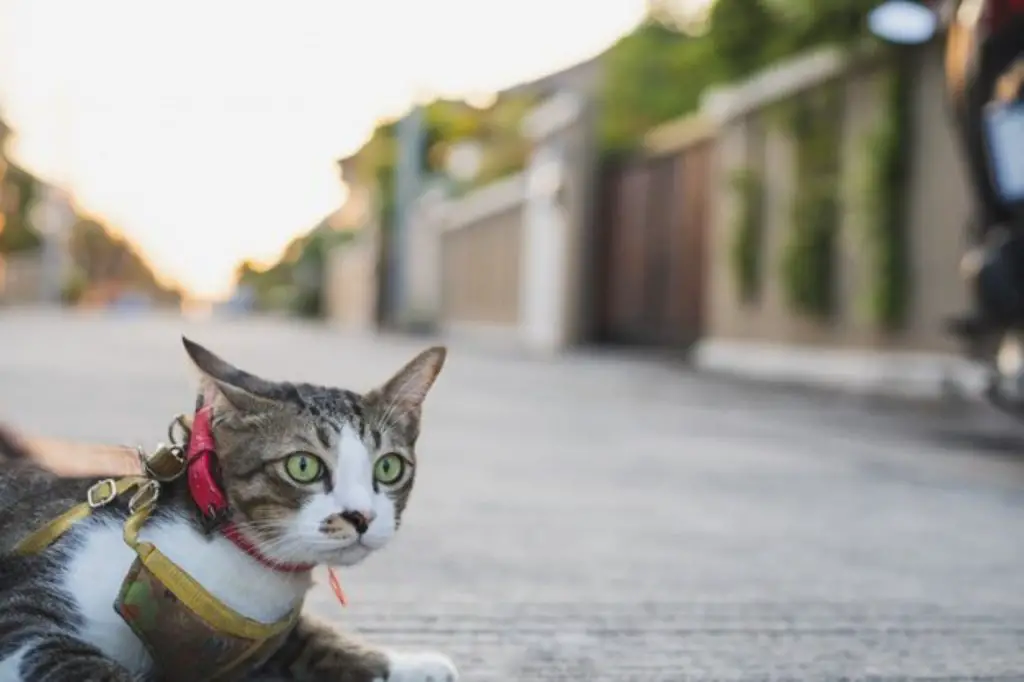
To minimize noise distractions, you’ll want to choose a location with effective noise reduction. This might mean setting up in a quiet room with thick walls or using white noise machines to mask background sounds.
Before starting a training session, take a moment to assess the environment. Listen for potential distractions like barking dogs, chatty family members, or noisy appliances.
If you identify any issues, consider relocating or using distraction techniques like calming music or a fan to create a more peaceful atmosphere.
Your goal is to create a calm and focused environment that allows your cat to learn without unnecessary stress.
By being mindful of potential distractions and taking steps to minimize them, you’ll set yourself and your cat up for successful harness training sessions.
Secure Harness Zone
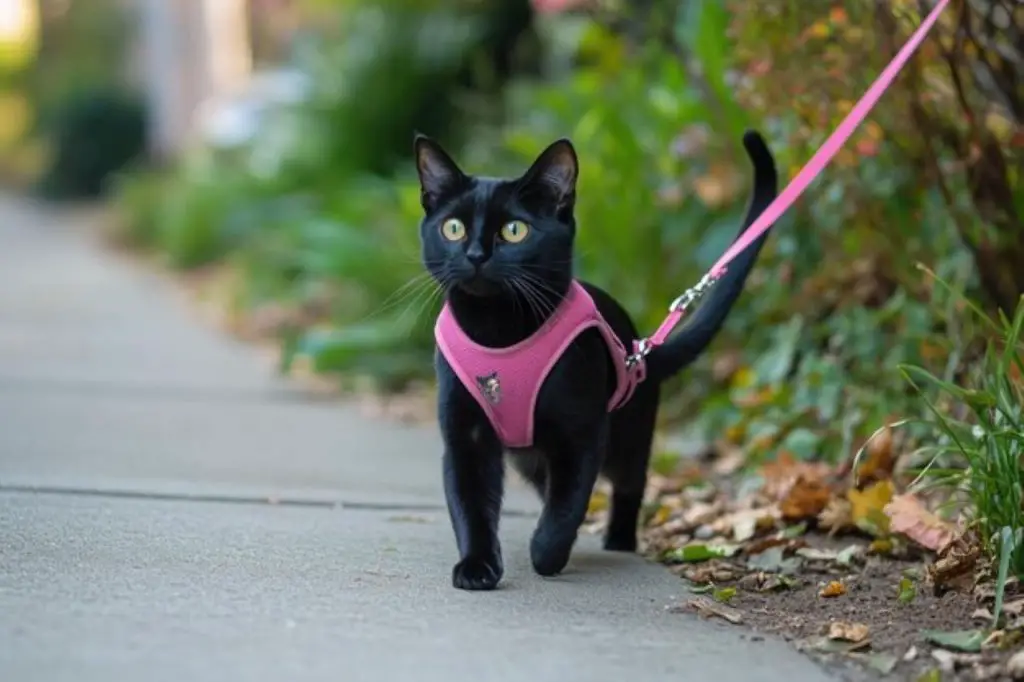
Your cat’s safety is paramount, so it is vital to designate a secure harness zone, a safe and stable area where they can move around freely without risk of injury or escape.
When choosing a location, consider your cat’s comfort and the type of harness you’ll be using. A quiet, enclosed space with minimal distractions is ideal.
| Location | Pros | Cons |
|---|---|---|
| Indoor room | Controlled environment, minimal distractions | Limited space |
| Outdoor enclosure | More space to roam, varied terrain | Potential escape risks |
| Hallway or corridor | Easy to supervise, ample space | Noise and distractions |
When selecting a secure harness zone, prioritize your cat’s comfort and the type of harness you’re using. For example, if you’re using a vest-style harness, a room with plenty of space to move around is essential.
On the other hand, if you’re using a simpler H-style harness, a hallway or corridor might be sufficient. Ultimately, the goal is to provide a safe and stable environment where your cat can become accustomed to wearing a harness.
Introduce the Harness Gradually
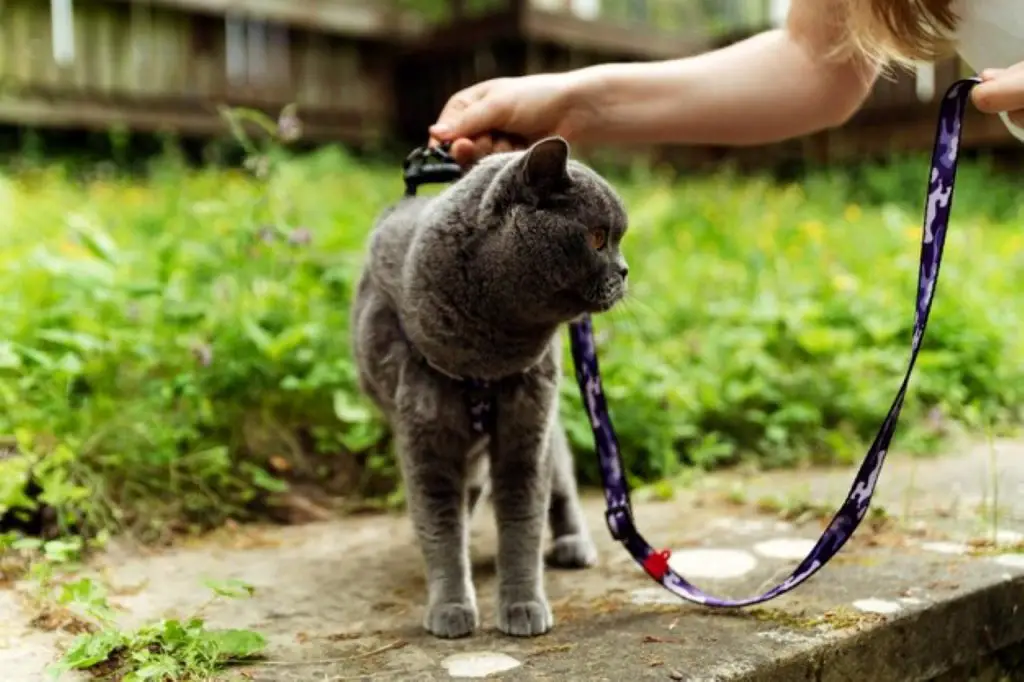
Begin by letting the cat see and sniff the harness at its own pace, allowing it to become familiar with the new object over the course of several hours or days.
This gradual exposure is essential in harness training, as it lets your cat dictate the pace and reduces the likelihood of overwhelming it.
Observe your cat’s behavior and body language; if it appears tense or avoids the harness, slow down the introduction process.
Place the harness in areas where your cat spends most of its time, such as favorite sleeping spots or near feeding areas.
As your cat becomes more comfortable with the harness’s presence, you can start moving it around to different locations, allowing your cat to become accustomed to seeing it in various contexts.
Get Your Cat Used to Wearing
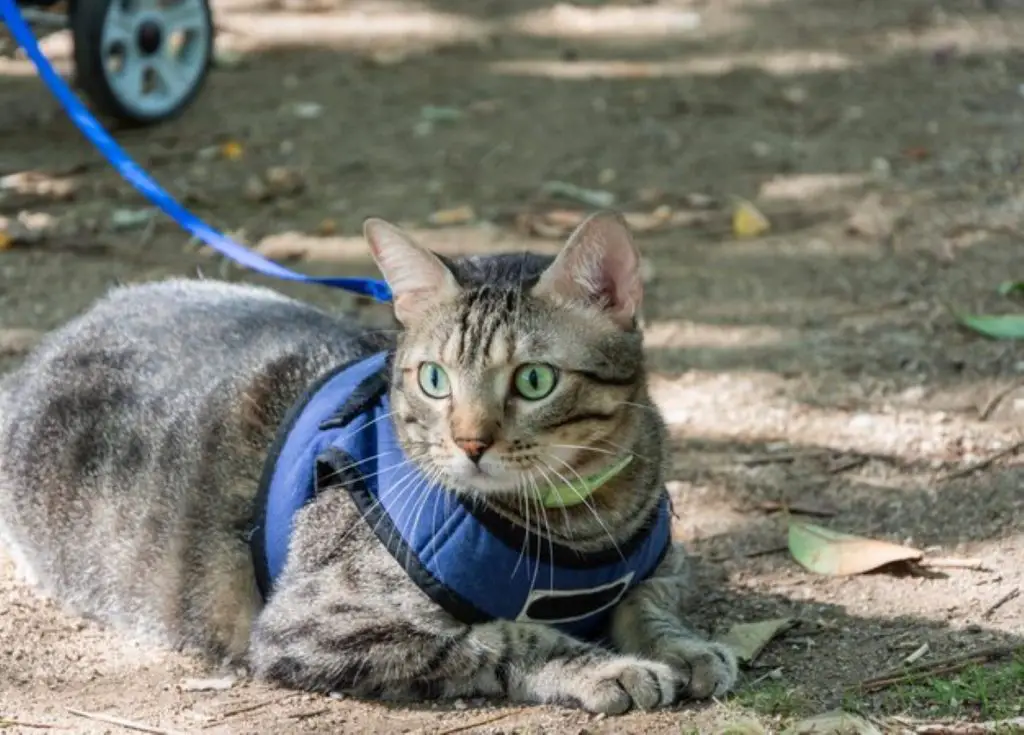
Now that your cat is familiar with the harness’s presence, it’s time to take the next step by helping it get used to wearing the harness, a process that requires patience, consistency, and positive reinforcement.
You’ll need to observe your cat’s behavior and reactions to guarantee a smooth shift.
To get your cat used to wearing the harness, follow these steps:
- Start with short sessions: Begin by putting the harness on your cat for short periods, such as 5-10 minutes, while indoors.
- Monitor cat behavior: Watch for signs of stress or discomfort, such as tail flicking, ear flattening, or trying to remove the harness.
- Guarantee harness comfort: Adjust the harness to fit your cat properly, making sure it’s not too tight or constricting.
- Reward good behavior: Positively reinforce your cat’s calm behavior with treats and praise while wearing the harness.
Add the Leash to Harness
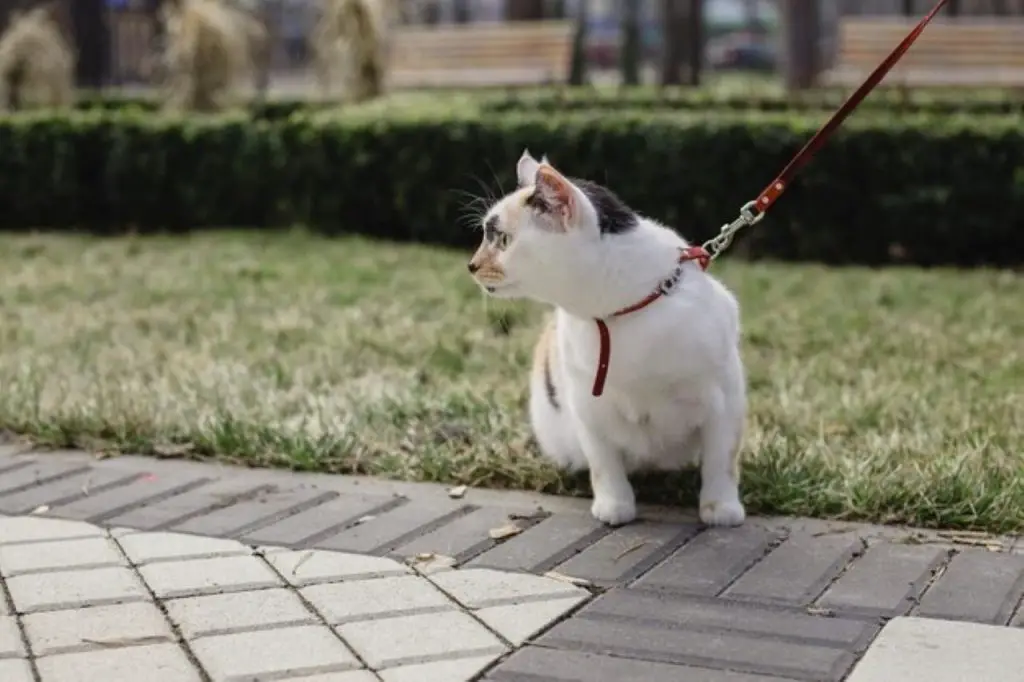
Attaching a leash to the cat’s harness is the next essential step in harness training, requiring gentle introduction and careful observation to avoid causing stress or discomfort.
You’ll want to choose a leash that complements the harness materials you’ve selected. For example, if you’re using a nylon harness, a nylon or rope leash would be a good match.
Consider the various leash types available, such as bungee leashes or elastic leashes, which can help absorb any sudden movements and provide a more comfortable experience for both you and your cat.
Before attaching the leash, make sure your cat is comfortable wearing the harness. Once you’ve attached the leash, let your cat get accustomed to the feeling of being on a leash while indoors.
Hold the leash loosely and let your cat move around freely.
Trending in Cats:
Reward your cat with treats and praise for remaining calm. If your cat shows signs of stress or discomfort, remove the leash immediately and try again later.
Start Walking Your Cat Indoors
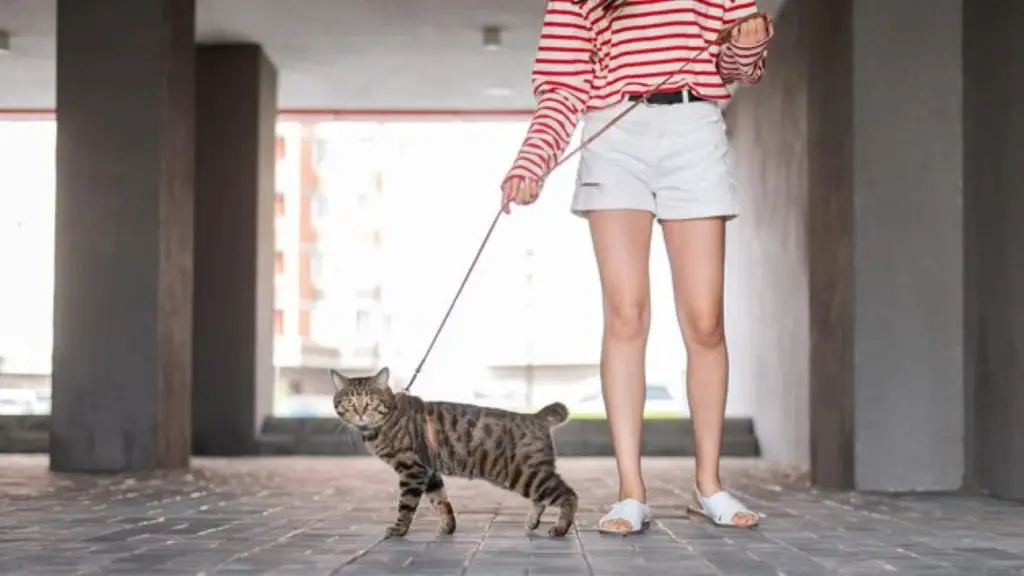
Now that your cat is comfortable with the harness and leash, it’s time to start walking them indoors.
You’ll need to choose the right equipment and create a safe space for your cat to get used to walking on a leash without feeling overwhelmed or distracted.
Choosing the Right Equipment
To successfully harness train your cat, you’ll need to choose the right equipment, starting with a well-fitting harness and leash that allow for safe and comfortable indoor walks.
With so many options available, selecting the right harness can be overwhelming. Here are 4 key things to take into account:
- Harness types: Look for a harness designed specifically for cats, as they’ve a unique body shape. Popular options include the H-style, vest-style, and jacket-style harnesses.
- Safety features: Verify the harness has a secure closure system, such as buckles or Velcro, to prevent your cat from slipping out.
- Comfort: Choose a harness made from breathable, lightweight materials that won’t chafe or irritate your cat’s skin.
- Adjustability: Opt for a harness with adjustable straps to verify a comfortable, customized fit for your cat.
When selecting a leash, take into account a lightweight, flexible option that won’t put too much strain on your cat’s neck or shoulders.
Creating a Safe Space
As you begin indoor walks with your cat, create a safe space by clearing a quiet, distraction-free area of any hazardous materials or fragile objects that could be easily knocked over.
This will help prevent accidents and allow your cat to focus on the training process.
Consider setting up a designated walking area, such as a hallway or room, where your cat can move around freely without encountering obstacles.
Understanding cat behavior is essential when creating a safe space. Cats are naturally curious and may be inclined to investigate their surroundings, so make sure to secure any loose wires, toxic substances, or other potential hazards.
Getting Your Cat Used
Harness training shifts into high gear when you start walking your cat indoors, a critical step that helps your cat become accustomed to wearing a harness while moving around freely.
This stage is all about getting your cat used to the feeling of wearing a harness while engaging in normal cat behavior. You’ll want to make it a positive experience, using positive reinforcement techniques to encourage your cat to explore and play.
Here are 4 ways to make indoor walking a success:
- Start slow: Begin with short sessions of just a few minutes, gradually increasing the time as your cat becomes more comfortable.
- Choose a quiet space: Select a quiet room with minimal distractions, allowing your cat to focus on the new sensations.
- Use treats and praise: Reward your cat with treats and praise for calm behavior, helping to associate the harness with positive experiences.
- Make it fun: Incorporate playtime and toys, making the experience enjoyable and engaging for your cat.
Progress to Outdoor Walks
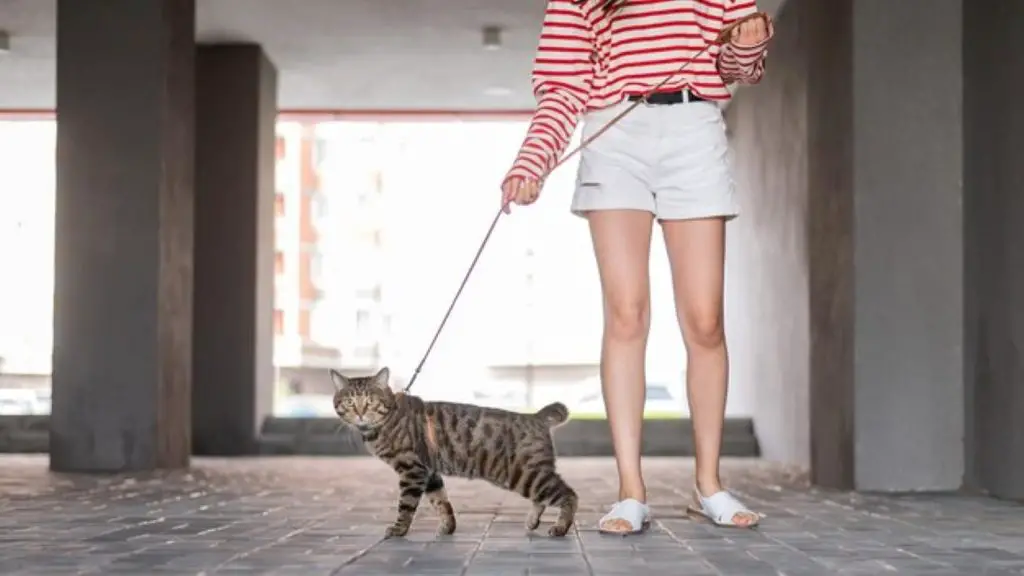
Once your cat is comfortable wearing the harness indoors, you can start introducing them to the outdoors by choosing a quiet, enclosed area such as a fenced garden or patio.
This will allow your cat to gradually become accustomed to the sights, sounds, and smells of the outdoors while minimizing the risk of them getting overwhelmed or escaping.
As you progress to outdoor walks, keep a close eye on your cat’s feline behavior and body language. If they appear stressed or anxious, it’s best to slow down the process and give them more time to adjust.
During these initial outdoor exploration sessions, keep the harness and leash loose, allowing your cat to set the pace. Reward them with treats and praise for calm behavior.
If your cat tries to pull away or shows signs of distress, calmly guide them back indoors. Remember, every cat is different, and some may take longer than others to adapt to outdoor walks.
Be patient, and prioritize your cat’s comfort and safety above all else. With time and practice, your cat will become more confident and enjoy the experience of outdoor exploration.
Frequently Asked Questions
You can start harness training kittens as early as 4-6 weeks old, but choose a well-fitting, lightweight harness. Opt for soft, flexible harness types and use positive reinforcement training techniques to foster a pleasant experience.
You can reduce your cat’s stress during vet visits with harness training, which provides stress relief by allowing them to become comfortable with wearing a harness, making travel and handling less overwhelming.
Carefully considering your cat’s character, you’ll commit to consistent training sessions. The training duration typically takes 2-6 weeks, depending on harness types and your cat’s comfort level, with short daily sessions yielding the best results.
You can harness train a senior cat, but you’ll need to take into account their age-related limitations. Observe their senior cat behavior and make harness comfort adjustments to avoid discomfort or pain, ensuring a comfortable and enjoyable experience.
You’ll want to guarantee harness safety by choosing a well-fitting harness and leash to prevent your cat from escaping. Check the harness’s design and material for escape prevention features, such as secure buckles and sturdy straps.
